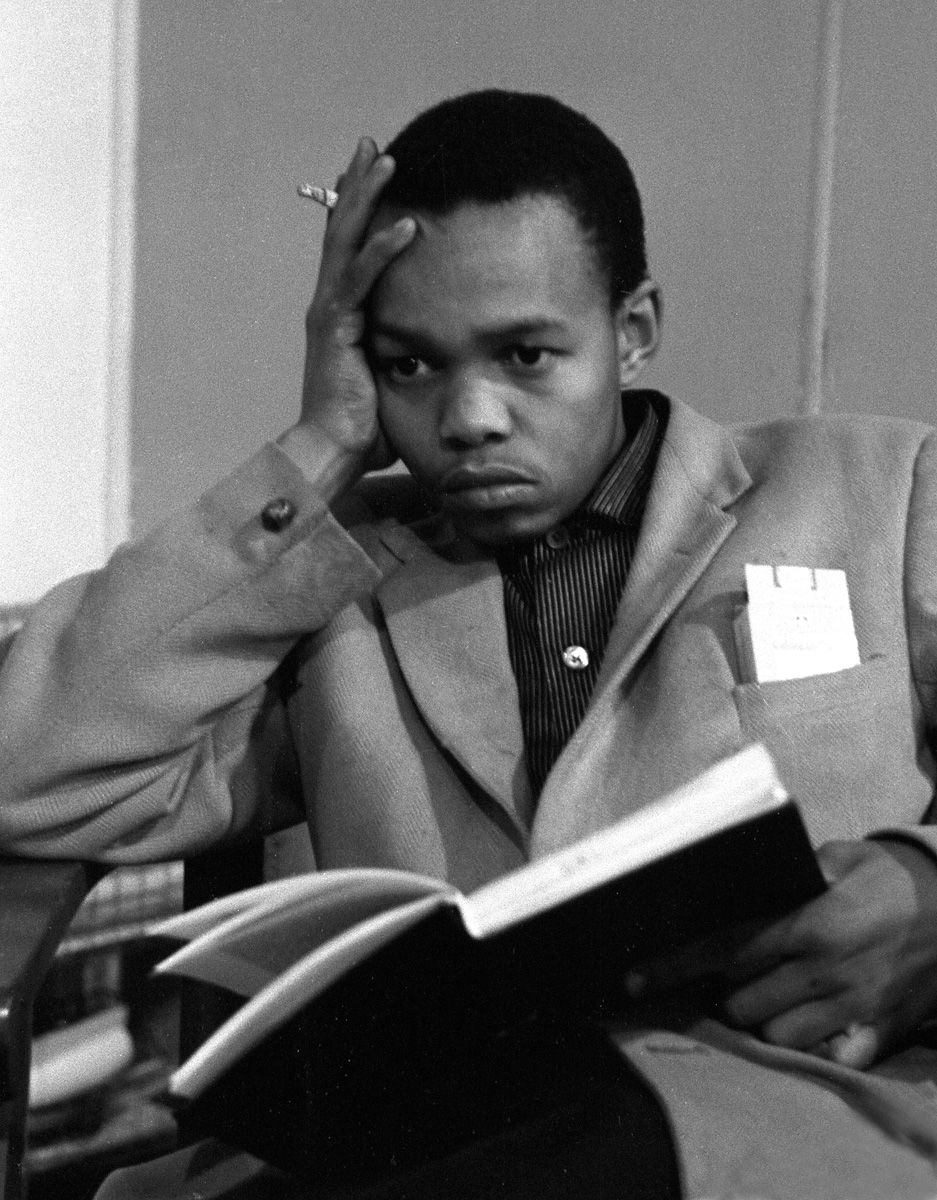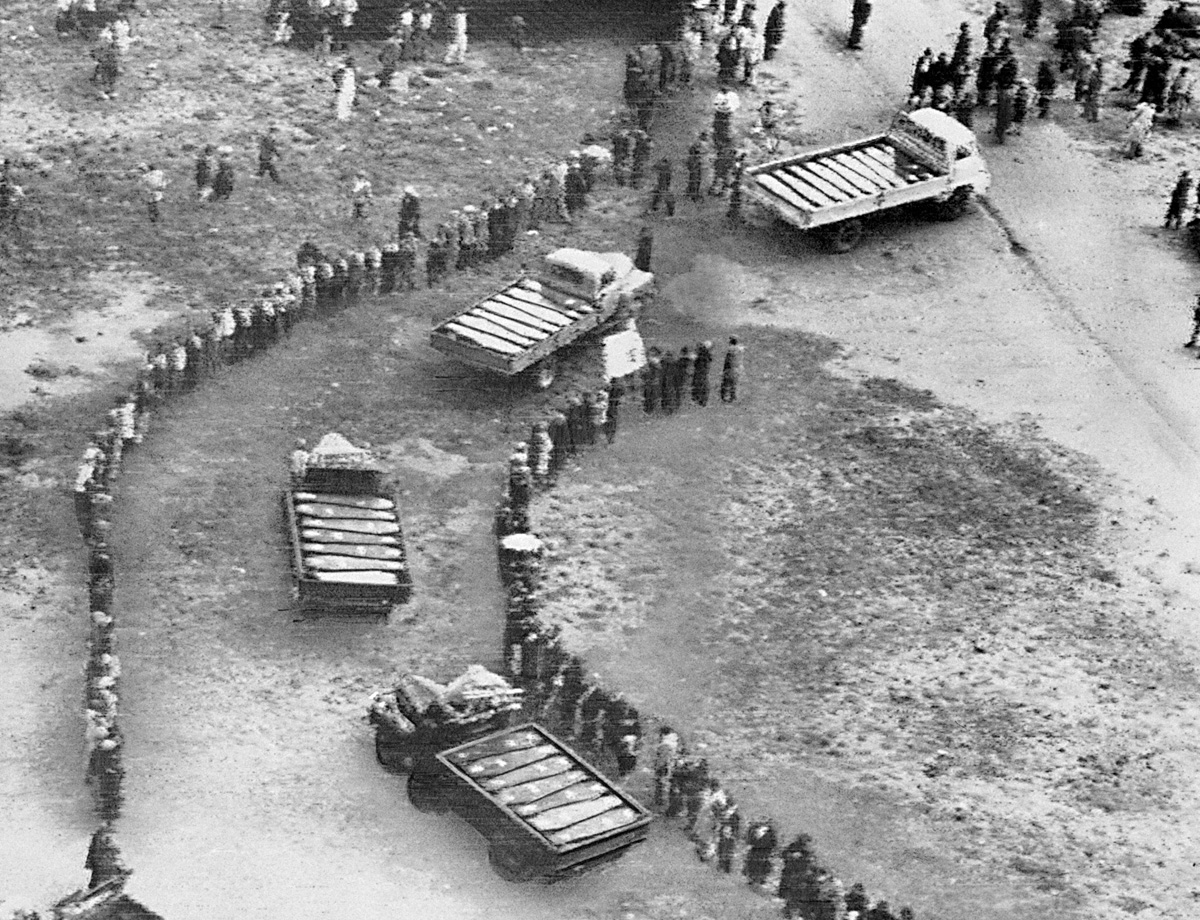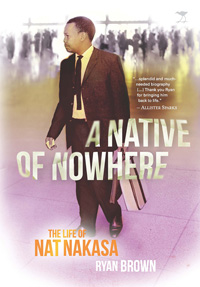
Nat Nakasa was 20 when he moved to Johannesburg to join the staff of Drum magazine
Nathaniel Nakasa left Harvard in the spring of 1965 ambivalent about his experience as a Nieman Fellow. According to his biographer Ryan Brown, he found studying race as an academic subject immensely frustrating.
Nakasa came to Harvard as one of South Africa’s most celebrated journalists and the first black columnist for the Rand Daily Mail. In the late 1950s and ’60s, he reported on the injustices of apartheid for Drum, the top black newsmagazine.
When Nakasa was offered a Nieman Fellowship, the South African government denied him permission to leave the country unless he gave up his right to ever return. At Harvard, Nakasa never warmed to most of his fellow Niemans or to life in America. After the fellowship, he moved to New York but he had no job and the depression that had settled on him after arriving in the U.S. didn’t lift. He wrote that he was a “native of nowhere … a stateless man.” That July, at the age of 28, he died after a fall from a seven-story window, a likely suicide.
In this excerpt from Brown’s “A Native of Nowhere: The Life of Nat Nakasa,” she focuses on the controversy Nakasa’s brand of journalism caused in South Africa.
Do Blacks Hate Whites?” blared the headline of Drum’s cover story in November 1958. The story was an “investigation into the most difficult, most critical issue in our country, in our time,” its opening lines announced. In fact, the question had seemed to hover over much of the magazine’s content that year, from stories of the African independence movements sweeping the continent to profiles of rioting factory workers and spot news pieces on protests against forced removals—all of them haunted by the question of apartheid and the chasms it was opening in South African society.
For his piece, Nat had collected the testimonies of a wide spectrum of black South Africans—a singer, a priest, a herdsman, a doctor, an activist—concluding that what the majority felt was “not hate then—quite. Suspicion. Distrust. Resentment. And guilt.” Along with a piece the following month casting the opposite question—“Do Whites Hate Blacks?”—the richly reported article was by far Nat’s most significant piece from his first year of reporting at Drum—and his most personal. “It is the correct, the accepted thing on the White side to show a cold hostility, if nothing worse, towards the black,” the 21-year-old wrote. “This harsh voice is now producing a black echo. The black man who still maintains social or friendly contacts with whites is being thought of as a ‘sell out’!”
The charge of selling out to the white establishment was one that had stalked Nat from the moment he started working at Drum. “People felt like he saw a lot of things through white eyes,” David Hazelhurst, a Drum editor, said. “To an extent,” said the white journalist Allister Sparks [NF ’63], “I think he simply felt closer to young white folk.” Putting it most pointedly, [veteran journalist] Leslie Sehume said Nat was “what we blacks would call a coconut”—that is to say, black on the outside, white on the inside.
Too often, they complained, he seemed cozy with the middle-class white reformers whose approach to racial equality they found maddeningly slow and condescending. “You can imagine, it was a very anti-white world we lived in,” said Joe Thloloe [NF ’89], “and when we left the shebeens in town and went home to Soweto, there he was walking off to the [white] northern suburbs to spend time with Nadine Gordimer and her friends.”
As Nat wrote years later, he had never been able to convince himself that the white left was the true political enemy in South Africa. Even young Afrikaners earned his sympathy for being brainwashed into tacit acceptance of apartheid. “In my view, my Afrikaner contemporaries are getting a raw deal,” he wrote. “The grip of authority on the minds of black youth is not as tight as it is on theirs.”
This kind of rhetoric earned Nat a special distinction among some black friends and colleagues. “Nat tommed [behaved in a servile way],” said his colleague Wally Serote. “He tommed while we were rat-racing for survival.” To Serote and the others, Nat had refused to throw the force of his identity behind his blackness, and they couldn’t understand why.
For many of Nat’s friends and colleagues, the question was simple: how could any white person, no matter how sympathetic, begin to understand what life looked like on their side of the colour bar? Sure, white liberals sneaked into the townships to drink illegal liquor and listen to jazz music, to feel the energy and chaos that vibrated through that world and to see how the other 80 per cent lived. But at the end of the evening, they got into their cars and drove back into a different South Africa, one where the majority of children attended school, people held jobs that paid a living wage, and the sight of a policeman calmed the nerves rather than sent them racing. …
Urban black intellectual life dazzled many of these left-leaning young whites because of the startling immediacy of its concerns and the rawness of its anger, qualities that felt distant, even among liberals, in the white world. But for black intellectuals themselves, the crucial distinction remained. However much a white South African bristled at apartheid’s laws, however many nights she spent with her African boyfriend, she always woke up the next morning still white. The black urban world she experienced in snapshots made up the entirety of life for men like Nat.
The same immediacy and rawness that thrilled his white friends held him in a chokehold. His circle drank voraciously, loved aggressively and balanced on the edge of the law not only because it was exciting, but because those in their social and racial position had no more stable path they could find their way onto—in short, no escape from their escapist life. How then, they wondered, could they stand shoulder to shoulder with whites politically? Even if they had the same goals, by the nature of the apartheid beast, blacks had to be scrappier, more radical and less compromising in the way they approached the issues.
But Nat never seemed to absorb that way of thinking completely. He’d grown up in a mixed township with a father committed to a multiracial strain of liberalism. His childhood was built on the idea that if you worked hard enough, behaved respectably enough and spoke sharply enough, the world would rise to meet your expectations—colour and class be damned. And even as he plunged into the Drum social world, he carried that sense of optimism with him. In that sense he was not so much a coconut as a chameleon—sometimes blending seamlessly with his scenery, but at other times vividly and suddenly out of place …

Trucks carrying coffins roll by mourners at a mass funeral in 1960 following the Sharpeville massacre
When Nat wrote of Africans’ escalating fear and sense of powerlessness, his general language veiled just how close to home the issue had become for him as a writer. Already fearful of a government crackdown, in the State of Emergency after Sharpeville [a 1960 massacre of black protesters by South African police] Drum faced two stark options: either to severely limit its political content or be banned completely by the government. The state’s emergency regulations blocked the magazine’s staff from publishing their account of the shooting for more than six months.
The May 1960 issue of Drum—the first to go to press after the tragedy—featured only a photographic spread of the funerals held for victims, headlined by a stark image of a long line of coffins and mourners, both of them trailing out to the edge of the frame. And in the July issue, Nat reported on a cadre of ANC [African National Congress] activists involved with the anti-pass campaigns who had gone into exile in Basutoland (now Lesotho). In the 1,500 words of the piece, he never mentioned the word “Sharpeville.”
Forced into a kind of journalistic amnesia, Nat and Drum struggled to convey the magnitude of apartheid resistance in a country whose rulers were intent on pretending it did not exist. This chokehold around the country’s news intensified a problem already building in the Drum offices—retaining writers in a country that refused to let them write.
Over the previous three years, the sardonic former Drum editor Sylvester Stein, who helped Nat get his first pass in Johannesburg, as well as writers and friends Todd Matshikiza, Arthur Maimane and Bloke Modisane, slipped into exile in Europe, unwilling to continue living subversively in the country of their birth. With the government and police hovering low over the activities of dissidents, the antics of fringe country began to feel for many as if they simply were not worth the tremendous danger they posed …
Amidst all of the tremendous uncertainty Nat faced in the early 1960s, however, the period was also marked by a momentous rise in his own career. With the size of South Africa’s black intellectual community shrinking, the young writer skyrocketed through its ranks. In a three-year span between 1961 and 1964, he not only founded a literary magazine and continued to write for Drum, but also became the first black columnist for the leading liberal white newspaper, the Rand Daily Mail. By the time he was 26 years old, he had been invited to follow Lewis Nkosi [NF ’61] to the United States on a prestigious journalism fellowship at Harvard University.
But if the South African government appeared determined to purge itself of dissident intellectual activity, it also sought to contain those same intellectuals within its own borders. So as Nat turned his sights to the United States, he came up against a government intent on keeping him firmly rooted in the country of his birth …
The moment Nat boarded his flight [to the U.S.] that day in 1964, he entered a dark rift. By law, he was no longer a South African, but by blood and personal history he was rooted only there.



